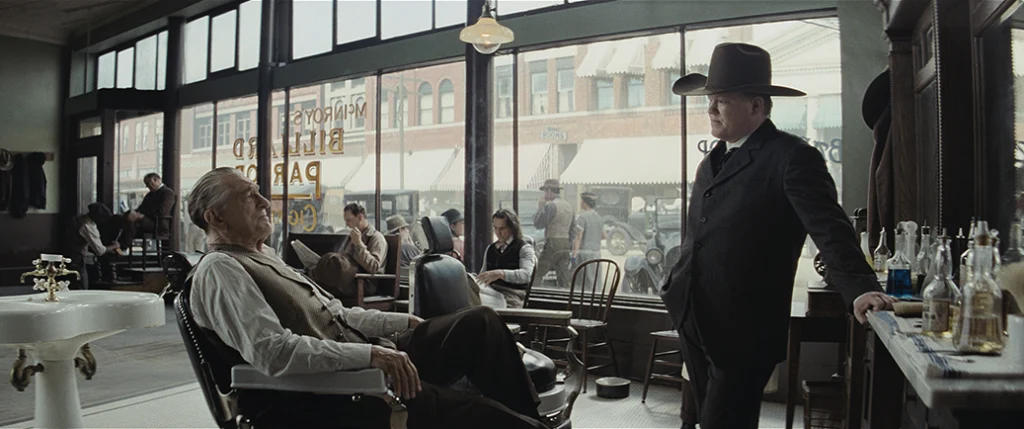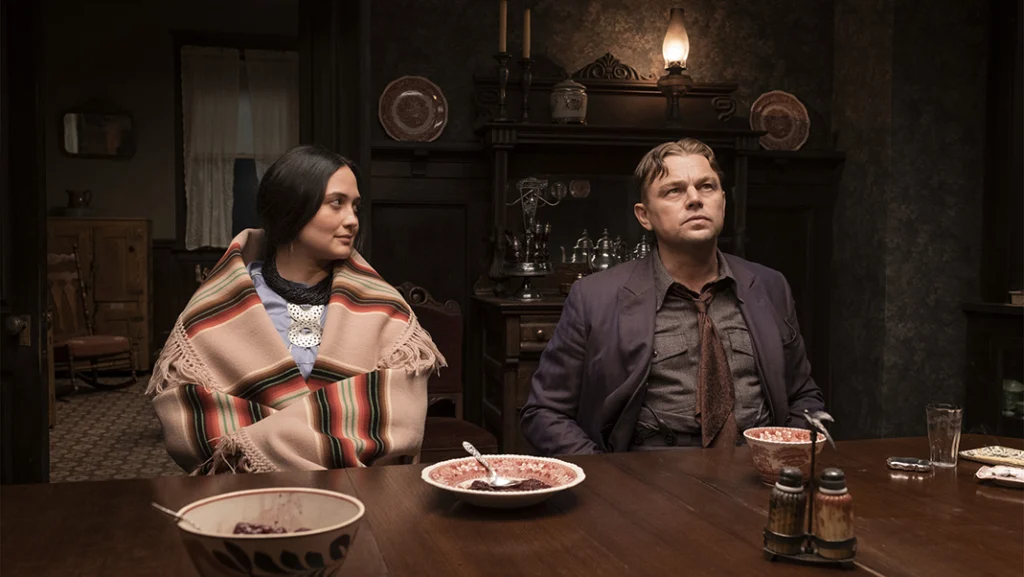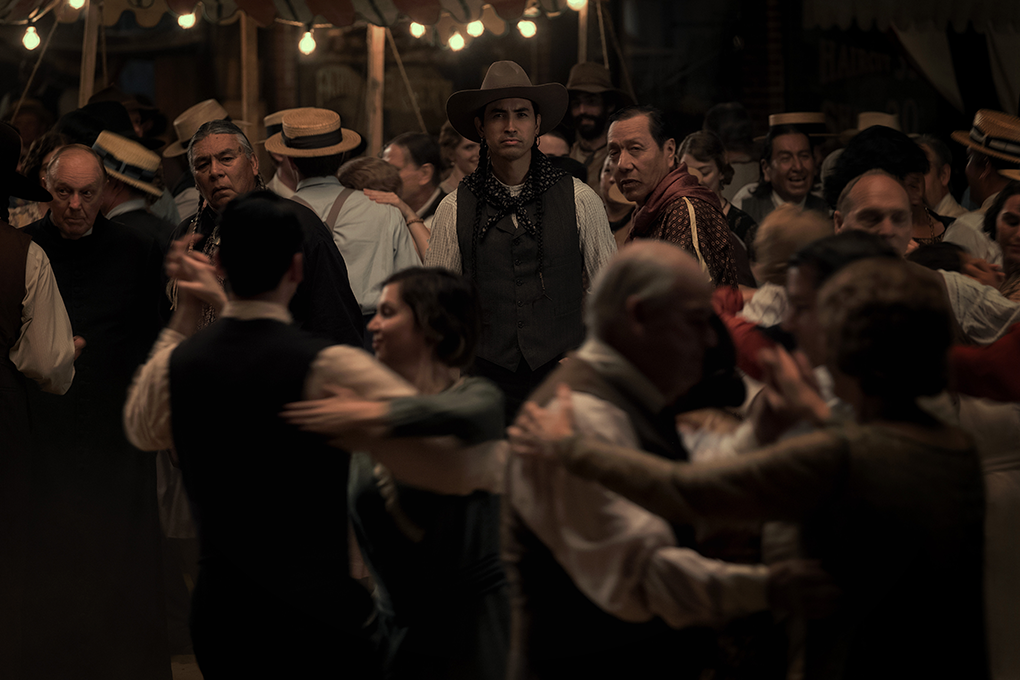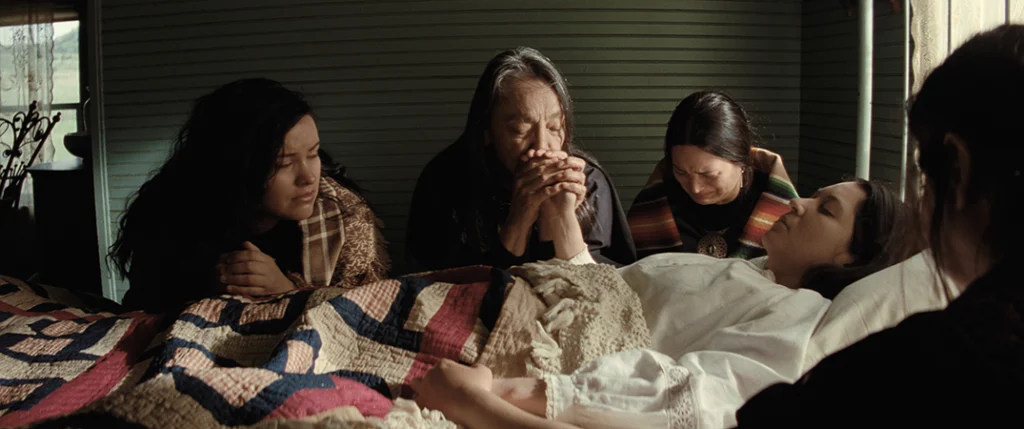If you were to do a Family Feud-style survey and ask a hundred people who the greatest movie director of all time is, you undoubtedly would get Alfred Hitchcock’s name on the board. Steven Spielberg would be up there, possibly even Stanley Kubrick as well. I cannot say where he would place, but without much doubt, Martin Scorsese’s name would be up on the board, and although he’s never been one of my favorite directors personally, there is no denying the man’s filmography. The master of the mobster movie is back in theaters with his new film from Apple Studios, Killers Of The Flower Moon, starring his good buddies Robert De Niro and Leonardo DiCaprio, along with Lily Gladstone.
In some ways, this is pretty standard crime/western/drama movie fare; great book material is adapted into a great film, but this movie doesn’t make you rethink your life, burst out in tears, or leave you on any kind of cinematic high. Despite its almost three-and-a-half-hour length, Scorsese tells this story in a way that, amazingly enough, doesn’t feel that long. It’s incredibly well-paced and structured; one of the year’s best scores is pumping into your ears and driving the film forward until the curtain falls. While some general audiences might not be as quick to climb on this long of a train ride with Scorsese and Co., most everyone will be able to take away an enjoyable, if not highly impactful, ride with these Killers Of The Flower Moon.

The story of Killers of the Flower Moon
Killers of the Flower Moon opens, and we see a long pipe being held up against the opening in the ceiling of the center of a teepee. As the man holding the pipe speaks in his Native American dialect, the subtitles “Tomorrow we will bury this one.” and “This Pipe Person” appear at the bottom of the screen. The Indian ritual continues, and more words are spoken inside the structure. Many more men and women are observing, some of whom are weeping, while a few youngsters peek through the holes in the walls. They’re mourning that the new generation of young Indians will be taught by “white people” and won’t know their ways and customs.
After the pipe is buried, we get a shot of some oil bubbling on the surface of some dried ground before exploding in a crude oil sprinkler, and five young Indian men are seen jumping through the oil. The camera shot runs in slow motion as their bodies slowly turn black from the splattering, inky liquid.
This is where the thumping original score first invades our consciousness. I’ll get into more detail on that later. After finding oil on Osage lands, they’re suddenly the wealthiest people per capita on the planet; we see video clips of them buying new cars, playing golf, and flying airplanes. This money attracts all kinds of people looking to get a slice of the pie, and on an inbound train, we see the dumbed down but still handsome, even with some cringey blackness in between his teeth, Ernest Burkhart (Leonardo DiCaprio).
Traveling in his World War I uniform, he reaches Oklahoma and meets with his cow rancher, Uncle William Hale (Robert De Niro), who gives him a lay of the land. William declares, “Osage are the finest and most beautiful people on God’s earth.” But after this thought, we begin to see clips of young Osage men and women; we’re told their names and ages, then we see that they are deceased, most lying on their backs on a bed, and we hear the words, “No investigation,” before clips of the next begin.
We’re then introduced to Mollie (Lily Gladstone) as she meets with an overweight white banker man who is an intermediary the government has assigned between the Osage and their money. Mollie has diabetes; she’s there asking for the money she needs for treatments and explaining the previous funds used for an operation for an abscess were successful. William sets Ernest up with a job and encourages him to pursue marriage to one of the local Osage women, in essence, to start infiltrating the Osage’s oil money.
As Ernest begins to give Mollie rides around town as her chauffeur, some glances turn into light flirting, and the next thing we know, Ernest proposes to her, and they’re soon married. That’s just how they did things a hundred years ago. Despite William’s coercing Ernest to get involved with the beautiful Mollie because she has family rites to some of the richest oil reserves, Ernest really seems to love and care for her. They have a daughter and start a family together.

Murder soon follows in Killers of the Flower Moon
But soon, William’s desire to stake a claim in the Osage’s oil turns to murder, as oil rites would only make their way to Ernest after all of Mollie’s sisters and mother had passed. So begins the maneuvering of pawn pieces in a chess game of family inheritance, oil fields, wealth, and greed. Despite Ernest having access to virtually whatever he wants, driving a red roadster, and enjoying a life of ease now that he’s married to a sugar mama, he’s soon swept along the river of greed and covetousness that’s consumed his uncle. As the plot thickens and the bodies accumulate, one last ditch effort by the sickly Mollie to the President of the United States finally brings an investigation into the death and murder that’s plaguing the Osage nation.

Scorsese constructs a fascinating story
Killers Of The Flower Moon is as well constructed and put together a film as you’ll find in theaters this year. Cinematically, the film is pretty but doesn’t have the same visual flare as, say, one of the other Academy Awards juggernauts against whom it’ll be contending, Oppenheimer. Scorsese is a master director; there’s no doubt or question about it. He constructs a fascinating story with this material that’s second to none.
Even if the dialogue from screenwriter Eric Roth and Scorsese leaves you a bit wanting, Killers of the Flower Moon is paced so well. It continues to give us information on these characters, their motivations, arcs, and murders to make this story progression so engaging that I was never bored despite the film finishing well after midnight at my local theater. De Niro and DiCaprio are both excellent in their roles. While neither performance is an all-time best for either actor, the argument can be made for a top seven or even five from them, respectively.
But both actors have such long and distinguished careers that it’s hard to slot Killers of the Flower Moon among their very best pieces of work. Who did stand out, however, is the lovely Lily Gladstone, whose amazing portrayal of Mollie as the sickly Osage wife and mother, is bound to bring her Oscar buzz and eventual awards nominations.
The original score by Robbie Robertson, who sadly passed away just before the movie was released, is downright incredible; I kid you not when I say it is an all-timer. The beat, which finds a through line as it goes, is comprised of drums, bass guitar, and even sometimes low-note piano keystrokes; its’ solemn and melancholic tones fit this film like a hand in a glove.

Final thoughts on Killers of the Flower Moon
That said, Flower Moon was a really good movie, maybe even a great one, and I respect the hell out of it. I’ve already listened to this score more than I have for any other film this year. But the emotional connection I had with this film was minimal, and at the end of the day, a really solid and entertaining movie is nothing to complain about; it just won’t make my very favorite films of the year.
I’m not going to oversell this film for clickbait and sensationalism; this is an extremely solid film; most general audiences, cinephiles, and critics will have a good to great moviegoing experience with it, and there’s not much to dislike. But I was always kept a bit at arm’s length from connecting emotionally with these Killers and their poor Native American victims Of The Flower Moon.
Killers of the Flower Moon is now streaming.
Have you watched Killers of the Flower Moon yet? What did you think? Connect with us on social media at X @MoviesWeTexted to share your thoughts.
Note: This review was originally published in 2023. It is part of our 96th Academy Awards series.
You might also like…
‘Barbie’ Movie Review



